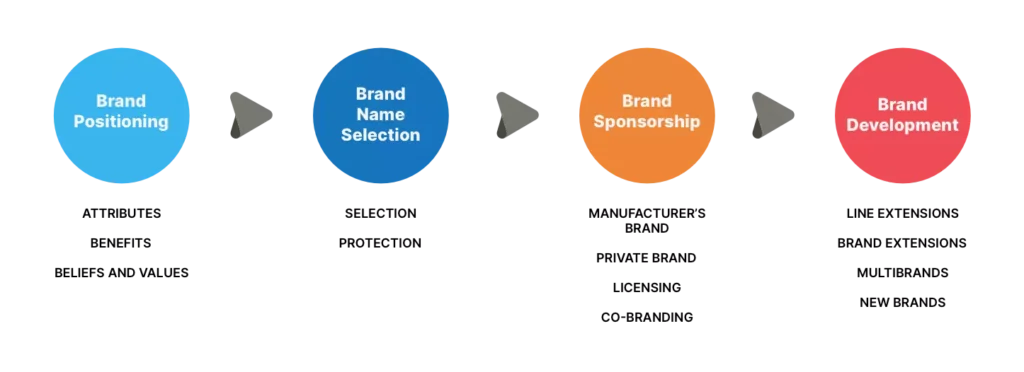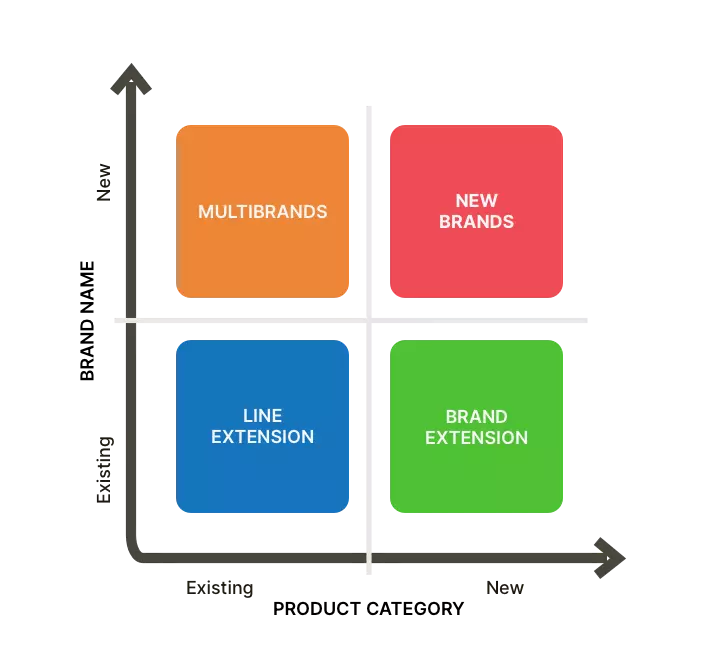There’s a moment in every new founder’s journey when you realize something very uncomfortable:
You’re not ‘special’.
Your product might be amazing. Your team might be working 18-hour days. But when people try to describe your brand to their friends… they say things like,
“Oh, I think they do something in AI… or productivity… or something like that?”
People don’t recognize your brand yet, or worse – it gets mixed up in the marketplace.
No worries, though, we’ll fix it after this article.
If you want to build a business people remember — and talk about — there are four brand strategy decisions you can’t afford to ignore. This article will walk you through them.
Just make sure to implement the advice, and you’re golden.

Most founders try to position their brand by listing out a bunch of product features.
“It’s got end-to-end encryption, AI prioritization, multi-user dashboards…”
Cool, but let’s zoom out of ‘geek mode’ for a second.
Here’s what your customer is ALWAYS wondering:
“What does this mean for ME?”
Great brands don’t just describe what they do — they describe how people feel after using them – and what results they get.
If you want to build a sticky brand, that’s what you need to focus on.
There are really only three levels you can position a brand on:
Attributes are obviously easy to copy, and therefore should NOT be your branding focus. If you want an actual brand, focus on benefits and beliefs.
Ask yourself:
Am I selling a product, or am I selling a perspective?
The strongest brands don’t compete on features. They compete on feelings.
Just look at Apple. Do you remember the iconic “Think different” campaign?
That was Jobs’ brand. He infused his personal beliefs and personality into the company. It really had culture under Steve Jobs.
He was inviting you to join a movement – to see yourself as a rebel, a creative, an outsider who makes change happen.
That’s why people lined up at midnight (and still do) to buy the same phone in a new color.
It wasn’t about the phone.
A strong brand is more a world than it is a business. Think about it that way.
You want to build worlds people love to join and hate to leave. If you can do that, you HAVE no competition – and that’s the ultimate point of branding.
Make everything look, smell, and taste a little differently than everything they’ve ever seen. I recently read a book on world building, and the author compared it to Narnia.
The children went through a closet, and suddenly – they were in this new exciting world, where EVERYTHING was different.
The closet is your traffic source, and the city are your product and marketing. Take some time to digest this, because this is an immensely powerful insight.
It’s a step-by-step guide designed to show you how to raise investments, build a product or service, launch it, and keep scaling as long as you want to.
If you’re an entrepreneur in ANY industry… you’ll find it really useful (plus it’s free!):
This one sounds obvious — until you start trying to name your own business.
You brainstorm 73 names. You check domain availability. You write 3,000 Slack messages debating whether “ly” or “io” is more tech-y.
And suddenly you’re calling your company something like “Brnzli”, and wondering why no one can pronounce it.
But really, your brand name doesn’t have to be that clever.
It just has to be clear, easy to say, and tied to what you stand for.
For example…
The name “Slack” doesn’t tell you everything. I mean, it’s a productivity app named after the verb ‘to slack’. It’s short, emotional, and sticky.
“Calendly” isn’t sexy — but it makes complete sense to everyone.
So before you chase clever, ask yourself:
Does it hint at what we do or how we help? Would someone know how to spell it if they heard it out loud? Can we trademark it — or will we be sued by a skincare company in week two?
Your brand name doesn’t have to win awards, but it does have to survive word-of-mouth.
But please, do not wait for 3 months to come up with a name and then start your business. Money loves speed. Build and iterate as you go.
This one’s often ignored, especially by early to mid-stage founders.
How your brand is presented to the world matters just as much as what you call it.
There are four ways to do this:
Co-branded: You share your product with a partner’s name. (Think: Apple Watch + Nike.)

If you’re building your first company, probably start with your own brand.
Yes, licensing or partnerships can open doors. But they can also confuse people about who you are, what you stand for, and why you exist.
You don’t want your brand to be someone else’s footnote.
So here’s the question:
Are you building something that could eventually be the name other brands want to borrow?
Start with that goal in mind.
Let’s say you’ve been building and selling a product.
People resonate with your brand… and now you want to do more to increase profits.
More products! More lines! More markets!
But if you don’t make the right kind of brand expansion decision — you can easily lose everything that made your brand special in the first place.
Let’s not dilute your brand, shall we?

Here are your 4 growth options:
Of course, each one has pros and cons. But just be careful about one thing…
The more you stretch your brand across categories, the more diluted your positioning becomes.
So if people love you for one thing, don’t get greedy and try to be everything. For example, if you’re dominating a niche, resist the urge to expand into new niches.
Grow deep before you grow wide.
Ask yourself:
Will this new move reinforce my story, or confuse it? If it flops, will it take my original brand down with it?
Growth is great, but consistency is what keeps people coming back.
Most early-stage founders build a product, but the smart ones build a world.
That’s what branding actually is, just a series of decisions that make your business unforgettable. If you don’t make them on purpose, the market will make them for you.
Here’s what to keep in mind:

Email subscription is available ONLY TODAY (oh, okay, and tomorrow).
Surely, we respect your inbox! Unsubscription works every day.

We’d love to tailor your experience — which of these best describes you?